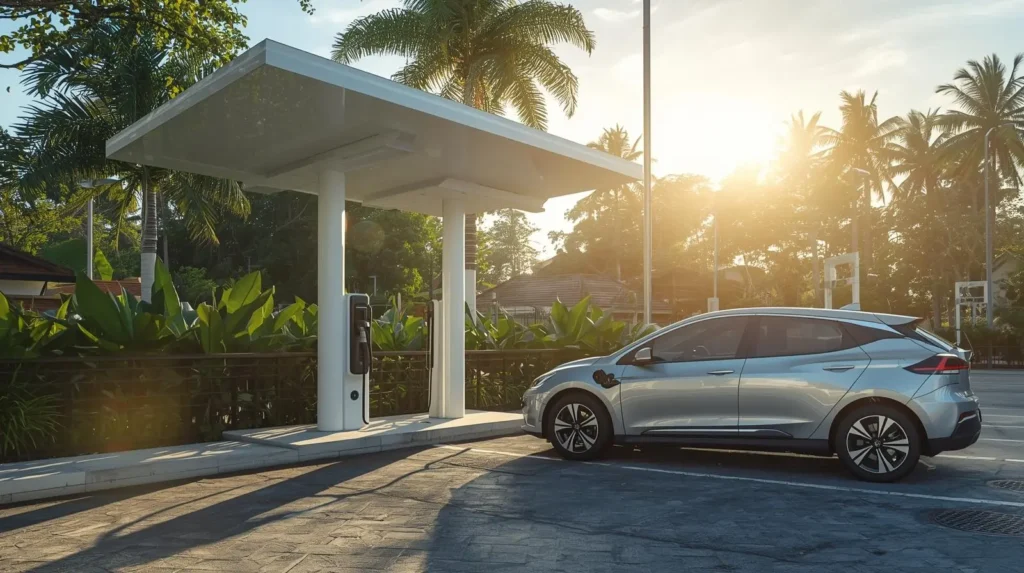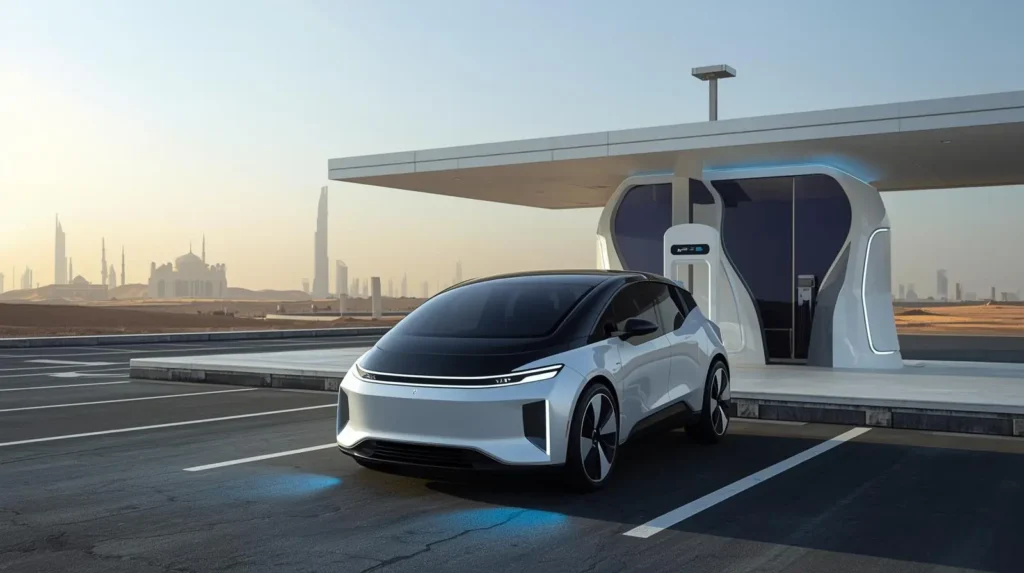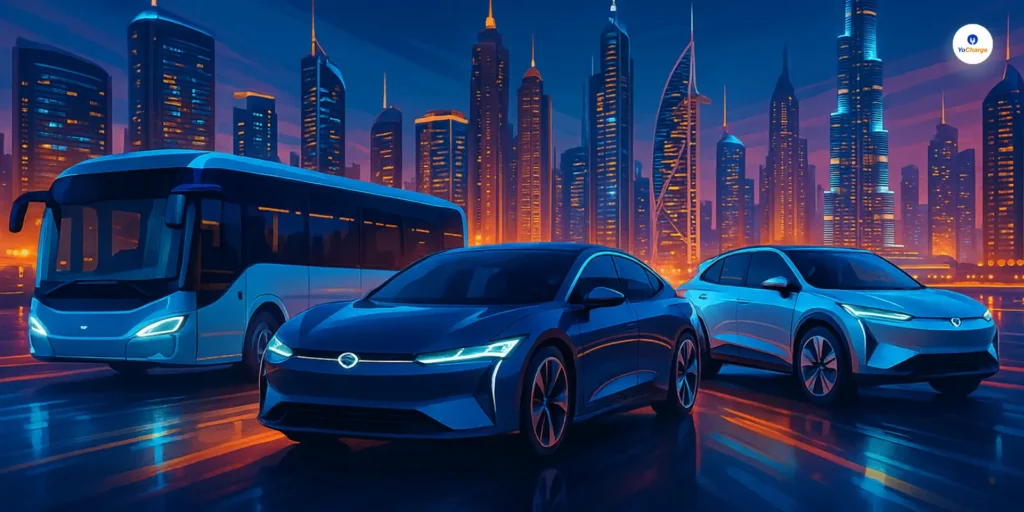
Electric Vehicle Incentives by Country: Electric vehicles (EVs) are gaining popularity as the world focuses on sustainable transportation.
Governments are offering incentives to make EVs affordable and encourage their use.
This article explains electric vehicle incentives by country, their types, and their impacts on the EV market.
What Are Electric Vehicle Incentives?
Electric vehicle incentives are benefits offered to reduce the cost of EVs. These benefits aim to make EVs affordable and promote clean transportation. They include financial support, tax breaks, and infrastructure development.
Types of Electric Vehicle Incentives
- Purchase Incentives: Buyers receive tax credits, rebates, or grants to lower the cost of buying EVs.
- Tax Benefits: EV owners get tax reductions like lower sales tax or income tax.
- Charging Infrastructure Support: Governments invest in public charging stations and home charging setups.
- Operational Incentives: EVs often qualify for lower registration fees, toll exemptions, or carpool lane access.
- Corporate Incentives: Companies investing in EV fleets or chargers receive benefits.
Also Read: Everything About Fast EV Charging Technology
Electric Vehicle Incentives by Country
Governments worldwide use incentives to promote EV adoption. Let’s explore electric vehicle incentives by country.
Electric Vehicle Incentives in United States
The U.S. offers federal and state-level incentives for EV buyers.
- Federal Tax Credit: Eligible buyers can get up to $7,500 in tax credits. New rules for 2024 make some credits instant.
- State Incentives
- California: Offers rebates up to $2,000 through its Clean Vehicle Rebate Project.
- New York: Provides up to $2,000 in rebates for EVs.
Electric Vehicle Incentives in European Union
The EU supports EV adoption with incentives in all member countries.
- General Tax Benefits
- Germany: Offers up to €9,000 for battery electric vehicles (BEVs).
- France: Provides up to €6,000 for BEVs and €3,000 for plug-in hybrids.
- Charging Infrastructure
- The Netherlands: Offers subsidies for public and home charging installations.
- Tax Exemptions
- Norway: No value-added tax (VAT) on EVs priced below NOK 500,000.
Electric Vehicle Incentives in China
China is one of the largest EV markets globally, with strong incentives.
- Subsidies: EVs with a range above 400 km get up to ¥22,500 (around $3,500).
- Local Perks: Many cities offer free parking and access to bus lanes for EVs.
- Charging Network: Over 1 million public charging stations were installed as of 2023.
Electric Vehicle Incentives in India
India is promoting EVs through various programs and schemes.
- FAME India Scheme
- Up to ₹1.5 lakh (around $1,800) for two-wheelers.
- Up to ₹2.5 lakh (around $3,000) for four-wheelers.
- Production Linked Incentive (PLI): Supports domestic EV and battery manufacturing through financial incentives.
- Charging Infrastructure: Plans to install 7,000 fast chargers in major cities by 2024.
Electric Vehicle Incentives in Canada
Canada has federal and provincial incentives for EV buyers.
- Federal Incentive Program: Offers up to CAD $5,000 (around $3,800) for eligible EVs.
- Provincial Programs
- British Columbia: Offers rebates up to CAD $3,000.
- Quebec: Provides up to CAD $8,000 for BEVs.
Electric Vehicle Incentives in United Kingdom
The UK supports EV adoption with grants and tax benefits.
- Plug-in Car Grant (PiCG): Offers up to £1,500 (around $1,900) for EVs priced under £32,000.
- Tax Benefits: EVs are exempt from road tax and enjoy reduced company car tax rates.
- Charging Infrastructure: The UK invests heavily in public chargers through its Road to Zero strategy.
Impact of Electric Vehicle Incentives
Electric vehicle incentives in countries have led to higher EV adoption and market growth.
Higher EV Adoption Rates
- In Norway, over 54% of new car sales in 2022 were electric.
- In China, EVs made up 25% of all car sales in 2022.
Market Transformation
- Electric vehicles could account for 30% of car sales globally by 2030.
- The International Energy Agency predicts nearly half of new cars could be electric by 2035.
Economic Benefits
- Job Creation: EV manufacturing creates jobs, especially in battery production.
- Energy Independence: EVs reduce the need for imported fossil fuels.
Challenges Facing Electric Vehicle Incentives
Incentives have been effective, but challenges remain.
Limited Access for Low-Income Groups
- Income Restrictions: Some programs exclude low-income families due to eligibility rules.
- Geographic Disparities: Rural areas often lack charging infrastructure and incentives.
Budget Constraints
- Fiscal Pressure: Rising EV adoption increases the cost of subsidies for governments.
- Phasing Out Incentives: Countries may reduce subsidies as EV adoption targets are met.
Also Read: A Simple Guide to Battery as a Service (BaaS)
Conclusion
Electric vehicle incentives by country are driving the global shift to sustainable transportation. These incentives reduce ownership costs and encourage clean energy use.
Challenges like budget constraints and access gaps need attention. With continued support and innovation, the world can achieve greener mobility for all.



